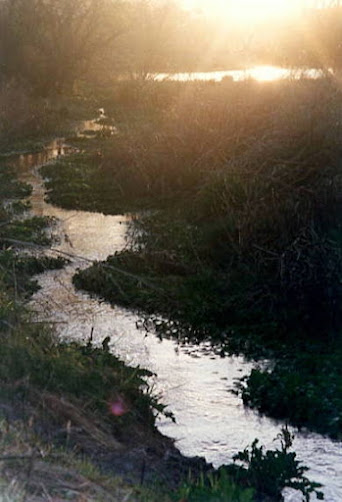The Marvel of Mimids
 |
As soon as the sun comes up, the male also likes to
perch at the top of one of the Hackberry trees, its long and slender, hooked
bill silhouetted against the sky.
When it opens that bill to begin to sing, what a marvelous series of melodies
comes out! It typically makes a whit-wheet call that sounds like someone whistling
to hail a taxi, but can also make a low chuk-chuk call that sounds much like
the Yellow-breasted Chat, and to imitate the fussy, raspy calls of Wrens. Its songs are very pleasant, with soft,
round notes up and down the scale in staccato phrases, similar to finches,
sparrows, and other small songbirds.
 |
| Northern Mockingbird |
Thrashers are part of the marvelous family of birds called Mimids, which include the Grey Catbird, all eight species of Thrashers found in the US, and the Northern Mockingbird. Each has the unique ability to mimic the sounds made by other birds, but the Northern Mockingbird is the most “talented” in that regard: this marvelous Mimid can fool you into thinking there are 10 or more different birds singing outside your house! Mockingbirds also sometimes sing at night, especially when there’s a full moon, and the males sing throughout the year rather than only in spring as most other birds do. Perhaps this is why they can continue to add new sounds to their repertoires throughout their lives, and learn around 200 songs throughout its life! Another Mockingbird characteristic unlike most other species is that female birds also sing, though typically during less of the year than males. I always rejoice to see any Mockingbirds in the garden, but the 3 that are hanging around a lot these days are especially delightful because they appear to be a female and two juveniles, which may mean there’s good nesting places for them nearby!
 |
| Gray Catbird |
The Gray Catbird is not native to Southern Arizona, but if you do visit any of its preferred habitats in other parts of the US, you will instantly recognize its hoarse, “mew” call, which is sometimes drawn-out and pleading, and sometimes sounds more like an angry feline! It can also imitate other bird songs, and its high-pitched ones sound like a Red-winged Blackbird to me. In addition, it has been known to imitate frogs and mechanical sounds, and to sing songs that last up to 10-minutes!
🎶 Perhaps because I love to sing, the calls and songs of all birds have intrigued me all my life, but I can especially relate to the Mimids because I like to sing all kinds of music styles: rhythm and blues, rock, jazz, country, and more. In fact, if birds got together and formed a band, I think there's no doubt that Mimids would be the lead singers- ha ha!
 |
| Spotted Towhee |
A non-Mimid bird that nonetheless has a repertoire of unusual songs is the Spotted Towhee. Though it's a member of the Sparrow family, it has the ability to meow like a curious cat in an unbelievably accurate tone, and also has a low, machine-like, eeb-eeb-eeb-eeb call. I have also heard it make high-pitched whistle sounds similar to a Thrasher.
When a Spotted Towhee's call bounces off of the side of a building or large tree trunk, it can sound completely different than when coming clearly through the underbrush. In fact, when leading bird walks in the Pacific Northwest and hearing a call or song that I don’t recognize, my first thought is often, “Could it be a Spotted Towhee?” because it has fooled me so many times!
 |
| Green-tailed Towhee |
For more information about bird songs and much, much more, I recommend visiting Cornell University's Lab of Ornithology website, www.AllAboutBirds.org. What a fabulous resource! Each bird on the site has multiple recordings of its songs and calls, as well as written descriptions of its life history, feeding and nesting behavior, and ID tips. It also has links to dozens of live-streaming cameras all over the world that are “capturing” bird behavior for all to see and learn from, free of change. Tuning into these “Bird TV stations" can be a refreshing change from the daily news of the human world too...!
Photo Credits:
- Curved-bill Thrasher by Peter Wallack/Wikimedia, Creative Commons Attribution 3.0 Unported license
- NorthernMockingbird by Captain Tucker/Wikimedia, Creative Commons Attribution-Share Alike 3.0 Unported license
- Gray Catbird by Tony Castro/Wikimedia, Creative Commons Attribution-Share Alike 4.0 International license
- Spotted Towhee by ZeWrestler/Wikimedia, Creative Commons Attribution 3.0 Unported license.jpg
- Green-tailed Towhee by naturepicsonline.com, Creative Commons Attribution 3.0 Unported license.jpg


